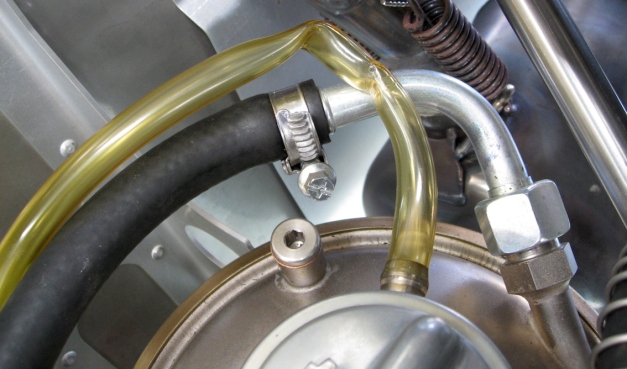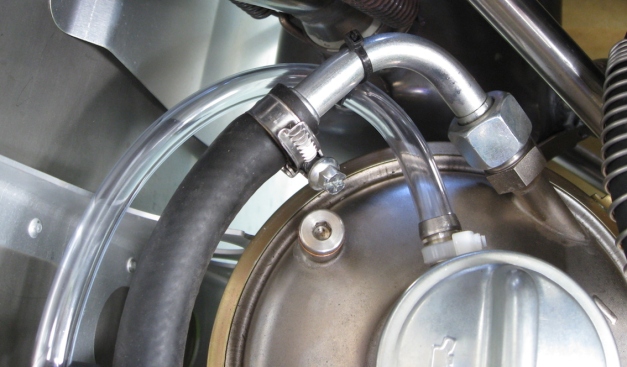One or two Rotax-engined aircraft owners have commented to me about ‘overflow’ from the oil breather tube which comes out of the Rotax oil reservoir/tank – often leaving a big brown stain all over the bottom of the aircraft. This can be very noticeable and leads to all sorts of concerns about what’s causing the tank apparently to become pressurised and release oil overboard. In fact, the amount of oil is very small, but the slipstream spreads it everywhere. Often, once the paint is stained, it’s almost impossible to clean off.
I’ve even heard from engineers, who are convinced there is something seriously wrong with the engine. While I’m not ruling this out in all cases, sometimes the problem is much simpler. There are basically three items to check before investigating the engine:
First, make sure the oil level is correct and not above the top mark on the dip stick after ‘bleeding’ (often called ‘burping’) the engine. Second, make sure the breather tube exits correctly through the cowling under the aircraft – contrary to one engineer’s assertion, the breather tube should NOT terminate INSIDE the cowling – see the Rotax engine installation manual.
Finally, have a look at these two photos. One shows an oil breather tube with a kink in it. The other photo is of a correctly installed tube. As you can see, the kinked tube is brown – mainly due to oil staining – and so is the bottom of the aircraft. The correctly installed tube, with no obstructions, is clean as is the bottom of the aircraft. It is essential that the oil reservoir is free to breathe!
So, before you start worrying about major engine problems, check the oil overflow tube. If It’s brown and discoloured, make sure it isn’t kinked or tied too tightly with cable ties. If necessary, replace it – or get a qualified engineer to do so. Bunnings Aerospace has an excellent selection of quality plastic tube which will do the job very nicely. Make sure the replacement tube is correctly cable-tied and routed away from the exhaust. And ensure there are no kinks or pinches in it.
Chances are, the overflow/breather problem will disappear.


